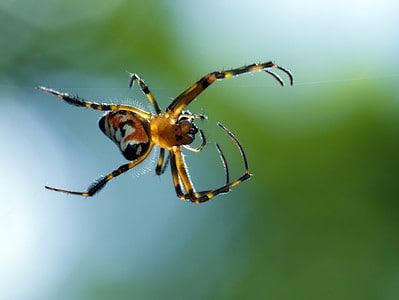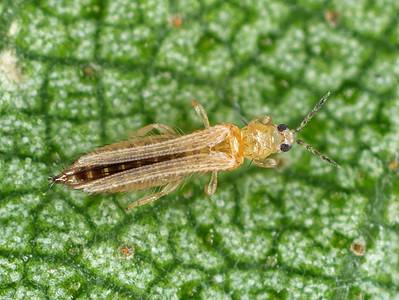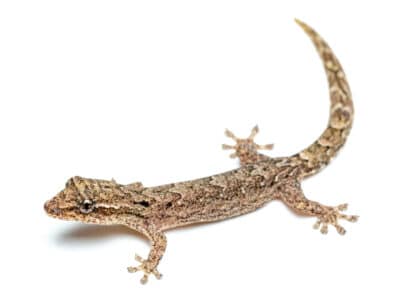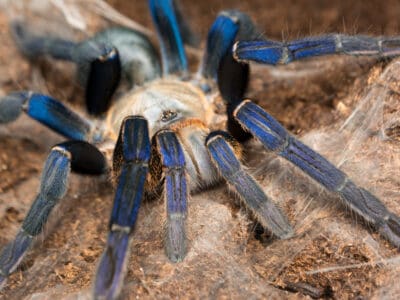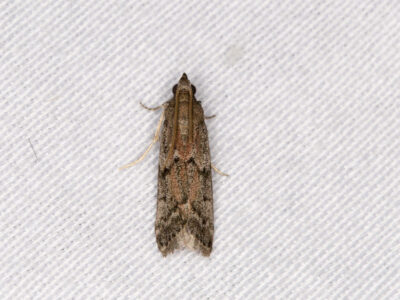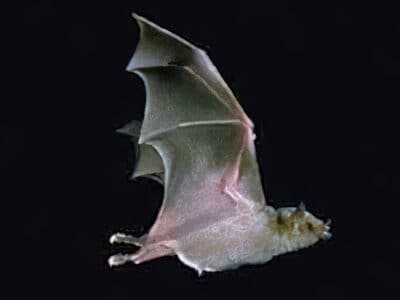Bombardier Beetle
Spray a noxious solution from their abdomens
Advertisement
Bombardier Beetle Scientific Classification
Read our Complete Guide to Classification of Animals.
Bombardier Beetle Conservation Status
Bombardier Beetle Facts
- Prey
- Insects
- Main Prey
- Insect larvae
- Name Of Young
- Larvae
- Group Behavior
- Mainly solitary
- Fun Fact
- Spray a noxious solution from their abdomens
- Biggest Threat
- Predation
- Most Distinctive Feature
- Colorful metallic wings
- Habitat
- Temperate forests, woodlands, and grasslands
- Predators
- Frogs, toads, spiders, other insects
- Diet
- Carnivore
- Lifestyle
- Nocturnal
- Number Of Species
- 499
- Location
- Worldwide
- Nesting Location
- Moist debris, carcasses
View all of the Bombardier Beetle images!
Bombardier beetles belong to the ground beetle family Carabidae. Scientists recognize over 500 individual bombardier beetle species belonging to four separate tribes. While they vary in size and color, all bombardier beetles share a similar defense mechanism. When threatened, bombardier beetles eject a caustic chemical solution from their abdomens. Some species can spray this compound at attackers and even kill small insects with their acid.
5 Bombardier Beetle Facts
- A bombardier beetle’s acid consists of two compounds – hydroquinone and hydrogen peroxide.
- The heat produced by the chemical reaction inside a bombardier beetle’s stomach can reach nearly 212 degrees Fahrenheit.
- Some bombardier beetles can direct their acid in a nearly 270-degree range of motion.
- Bombardier beetles can survive getting eaten by toads and frogs, as they use their noxious acids to entice their attackers to regurgitate them.
- On average, a bombardier beetle can fire its acid around 20 times before it runs out of chemicals and needs to recharge.
Species, Types, and Scientific Name
Bombardier beetles belong to the ground beetle family Carabidae. The word Carabidae derives from the Greek word karabas, meaning “horned beetle,” and the Latin ending –idae, meaning “resemblance.” Scientists currently recognize approximately 500 different bombardier beetle species. These species fall into one of four tribes – Brachinini, Paussini, Ozaenini, or Metriini. Each tribe contains numerous genera, which each, in turn, contain one of more associated species. Meanwhile, bombardier beetles get their common name from their unique habit of spraying noxious chemicals when threatened. The term bombardier traditionally refers to a crewmember of a bombing plane responsible for operating the bombsight and bomb release mechanism. A bombardier beetle’s ability to fire noxious acid somewhat resembles a bombardier’s role of releasing bombs on enemy targets, hence the name.
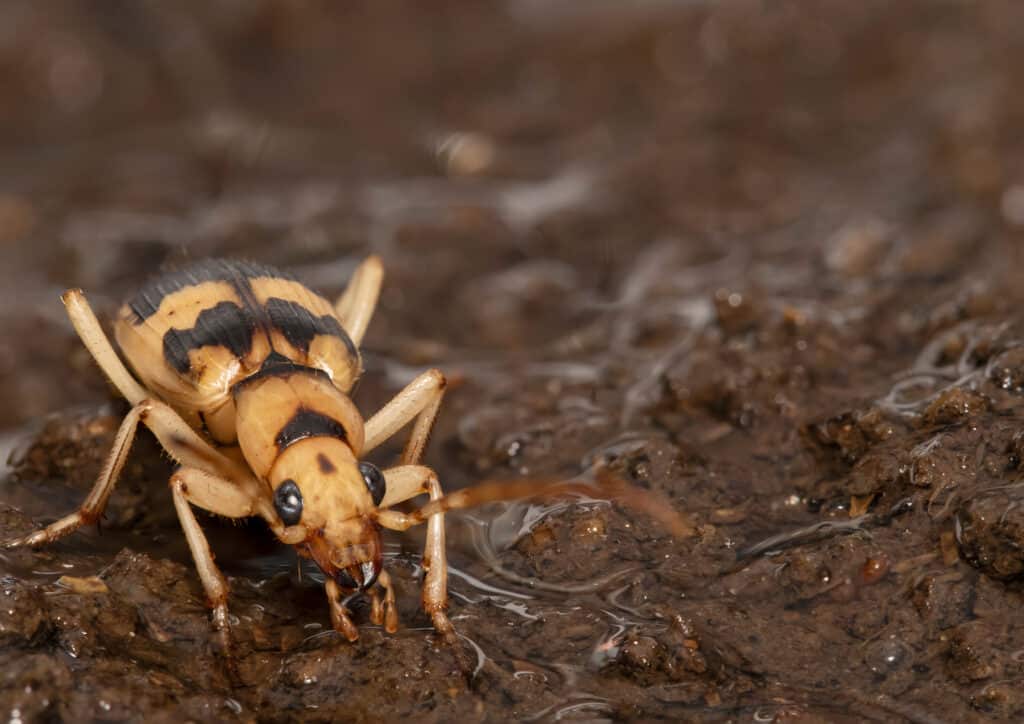
When threatened, the bombardier beetle ejects a caustic chemical solution from their abdomen.
©pusit_panya/Shutterstock.com
Appearance: How to Identify
Bombardier beetles vary in appearance depending on the species. That said, they typically share a number of similarities. The majority of bombardier beetles are quite small, with most measuring between 5 and 13 millimeters long. However, some species can grow to around 1 inch long. They normally possess elongated abdomens and comparatively small heads. They vary in color but often feature reddish heads and legs and blue, black, or green wing coverings.
Bombardier beetles possess two glands near the end of the abdomen. These glands consist of walled vestibules connected to a reservoir that contains an aqueous chemical solution. This solution is made up of hydrogen peroxide and hydroquinones. When threatened, bombardier beetles can open the valve connecting the reservoir containing the chemical solution to the vestibule. The secretory cells lining the vestibule walls cause the hydrogen peroxide in the solution to oxide. This oxidation triggers a chemical reaction that causes the temperature in the vestibule to rise rapidly. The buildup of heat and pressure forces the valves close, which protects the bombardier beetle’s internal organs.
Once the pressure reaches a tipping point, it ejects from the beetle’s abdomen in either a foam or liquid spray. The ejection is often accompanied by a small popping sound similar to a tiny explosion or gunshot. While most bombardier beetles merely face their abdomen toward a potential threat, some African bombardier beetles can swivel their abdomens around 270 degrees to face a target.
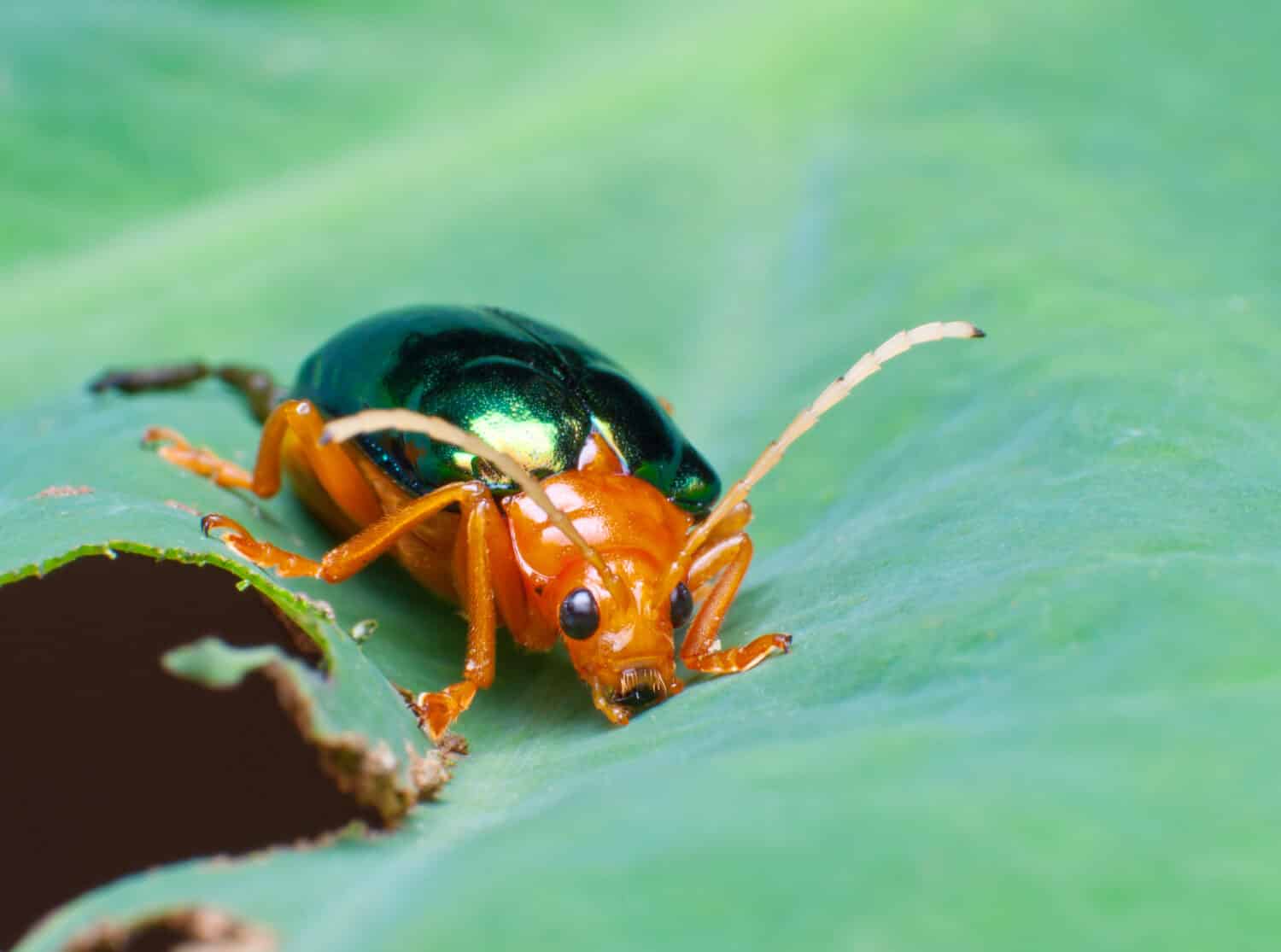
The bombardier beetle often has a reddish head and legs, with blue, black, or green wing coverings.
©johannviloria/Shutterstock.com
Habitat: Where to Find Bombardier Beetles
You can find bombardier beetles on every continent on Earth except Antarctica. Their preferred habitats include grasslands, woodlands, and forests. They also frequently live along the edges of lakes, ponds, and rivers. These regions provide the beetles with both cover and access to plenty of food. While they can live in deserts and savannas, they prefer temperate environments, as their eggs require moisture to survive. You can normally find them on the ground or on trees at night. Meanwhile, they typically retreat to cover during the day, hiding under leaf debris, logs, or rocks. While some species feature colored markings on their wing coverings, others lack any markings. Like other beetles, they possess a pair of antennae and 6 legs.
Diet: What Do Bombardier Beetles Eat?
Bombardier beetles are carnivores that prey on other, smaller insects. They are solitary hunters that almost exclusively hunt at night. Despite what you may think, they do not use their acidic spray to subdue prey. Instead, they tend to target vulnerable prey, such as the larvae of other insects. You can find bombardier beetles hunting on the ground or in trees. They also frequently hunt in the bodies of dead animals. Animal carcasses often contain larvae of various insects, which make great targets for bombardier beetles. Common prey include moth larvae as well as the larvae of other beetles. Bombardier beetles locate prey using a combination of sight and touch. They possess sensitive antennae and hairs along their body to detect the presence of other insects.
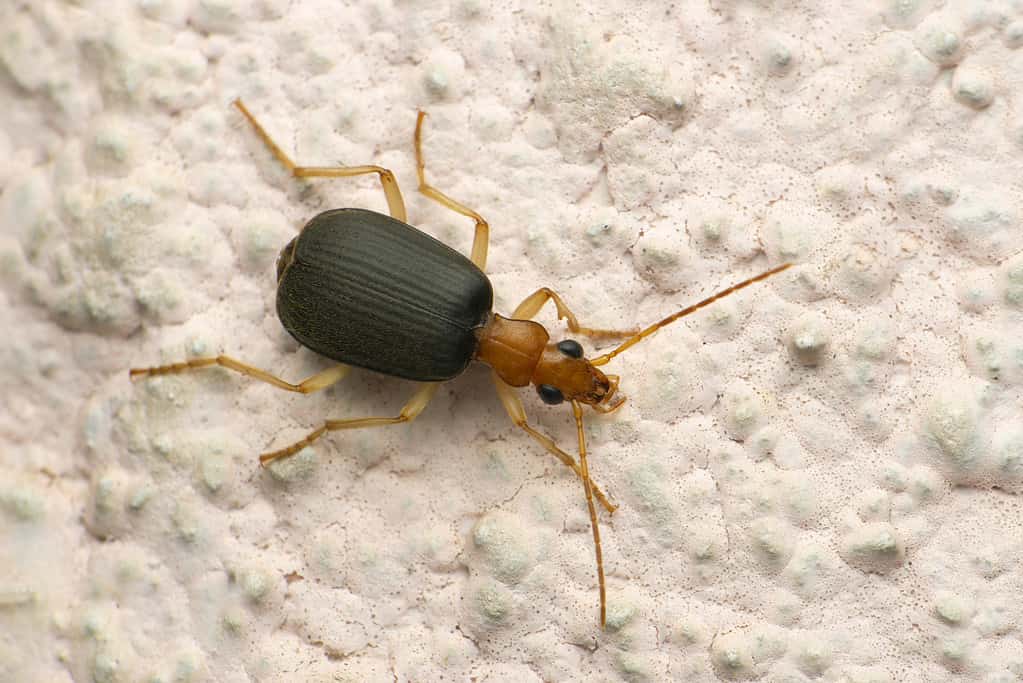
Scientists recognize over 500 individual bombardier beetle species belonging to four separate tribes.
©iStock.com/ePhotocorp
Conservation Status
There exist over 500 known bombardier beetle species. Most of these species have received little-to-no serious study. Given their widespread distribution, it’s safe to assume that most are not vulnerable or endangered. That said, more research is needed to determine the exact conservation status of bombardier beetles. As a result, the IUCN lists bombardier beetles as Not Evaluated.
Related Animals
View all 285 animals that start with BBombardier Beetle FAQs (Frequently Asked Questions)
What do bombardier beetles eat?
Bombardier beetles are carnivores, both as larvae and adults. Their diet consists mostly of smaller insects, including the larvae of moths and other beetles.
Are bombardier beetles solitary or social?
While hunting, bombardier beetles typically operate alone. However, when not hunting, they often congregate with other bombardier beetles in moist, covered areas.
Can bombardier beetles fly?
Although bombardier beetles possess wings, they cannot fly well. In fact, you’ll rarely, if ever, see a bombardier beetle fly. Their wings are simply holdovers from their evolutionary history, as their bodies are too big and unwieldy to fly effectively.
Can bombardier beetles hurt humans?
Bombardier beetles use their caustic acid as a defense mechanism. When threatened, they will spray their acid at predators, including humans. The acid won’t kill a person, but it can stain skin and cause burning or itching.
Thank you for reading! Have some feedback for us? Contact the AZ Animals editorial team.
Sources
- The National Wildlife Federation, Available here: https://www.nwf.org/Educational-Resources/Wildlife-Guide/Invertebrates/Bombardier-Beetles
- NC State Extension, Available here: https://content.ces.ncsu.edu/bombardier-beetles
- National Center for Science Education, Available here: https://ncse.ngo/bombardier-beetle-myth-exploded
- Australian Museum, Available here: https://australian.museum/learn/animals/insects/bombardier-beetle/
- McGill University, Available here: https://www.mcgill.ca/oss/article/environment/do-not-mess-bombardier-beetle
- Washington Post, Available here: https://www.washingtonpost.com/lifestyle/kidspost/scientists-solve-mystery-of-bombardier-beetles-hot-toxic-spray/2020/07/02/b0149ea4-badd-11ea-bdaf-a129f921026f_story.html








